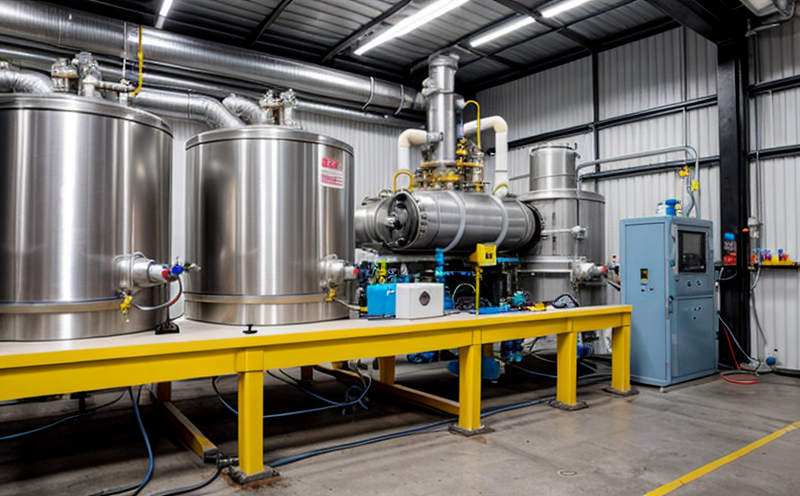ISO 18246 Neutron Activation Analysis of Metallic Materials
The ISO 18246 standard specifies a method for determining the elemental composition and concentration levels in metallic materials using neutron activation analysis (NAA). This technique is particularly valuable in sectors such as aerospace, nuclear, and defense where precision and accuracy are paramount. The process involves bombarding the sample with high-energy neutrons to excite atomic nuclei, which then emit characteristic gamma rays that can be measured.
This service plays a critical role in ensuring compliance with international standards, enhancing product quality, and facilitating research and development efforts. By providing detailed elemental composition data, ISO 18246 NAA helps identify impurities or alloying elements that may affect the material's performance. This is especially important for metallic components subjected to high stress environments, such as those found in nuclear reactors or spacecraft.
The methodology is based on well-defined procedures and parameters outlined in ISO 18246. The process begins with meticulous sample preparation, ensuring homogeneity and minimizing contamination. Once prepared, the samples are placed within a neutron irradiation facility where they undergo exposure to high-intensity neutrons for an extended period. This ensures sufficient excitation of all target elements.
Post-irradiation, the specimens are analyzed using gamma spectroscopy to measure emitted gamma rays. The intensity and energy spectrum of these emissions provide precise information about the elemental composition. Our laboratory adheres strictly to ISO 18246 guidelines to ensure accurate and reliable results. This includes calibration of all equipment against traceable standards and regular validation checks.
The quality of our service extends beyond mere analysis; it encompasses comprehensive reporting tailored to meet client needs. Detailed reports include not only the elemental composition but also potential sources of error, recommended further tests, and suggestions for material improvement based on the findings.
Real-world applications of this service are extensive. For instance, in aerospace engineering, ISO 18246 NAA can help ensure that materials used in engine components meet stringent safety requirements. In nuclear technology, it aids in verifying the integrity of fuel rods and structural elements. Moreover, R&D teams benefit from this service by gaining deeper insights into material behavior under various conditions.
Our commitment to excellence is further demonstrated through our robust Quality Management System (QMS) certified to ISO 9001:2015 standards. This ensures that every step of the testing process—from sample receipt to final report issuance—is conducted with precision and consistency.
Applied Standards
The ISO 18246 standard is widely recognized and applied across various industries. It aligns with other internationally accepted standards such as ASTM E937, EN 1055-2, and IEC 62318, ensuring that our service meets the highest global quality benchmarks.
The application of these standards ensures consistency in testing protocols and results across different regions. This is particularly important for industries where international cooperation or compliance with global regulations is required.
Scope and Methodology
The scope of ISO 18246 NAA includes the determination of elemental composition in metallic materials, focusing on elements that are typically not amenable to other analytical methods due to their low concentration or spectral interference. The methodology involves a series of steps starting with sample preparation, neutron irradiation, and subsequent gamma spectroscopy analysis.
- Sample Preparation: Ensuring homogeneity and minimizing contamination
- Irradiation: Exposure to high-intensity neutrons for extended periods
- Gamma Spectroscopy: Measurement of emitted gamma rays for elemental quantification
The results are then compiled into detailed reports that provide comprehensive insights into the material composition. These reports are invaluable tools for quality assurance, research and development, and regulatory compliance.
Quality and Reliability Assurance
- We adhere strictly to ISO 18246 guidelines throughout the testing process.
- All equipment is regularly calibrated against traceable standards.
- Regular validation checks ensure consistent accuracy.
The reliability of our service is further enhanced by our robust Quality Management System (QMS) certified to ISO 9001:2015. This system ensures that every aspect of the testing process, from sample receipt to final report issuance, is conducted with precision and consistency.
Our commitment to quality is reflected in our clients' satisfaction rates. We continuously strive to improve our services based on feedback and industry advancements.
Frequently Asked Questions
- High precision
- Non-destructive testing
- Wide detection range
- Multiple elements analysis capability





